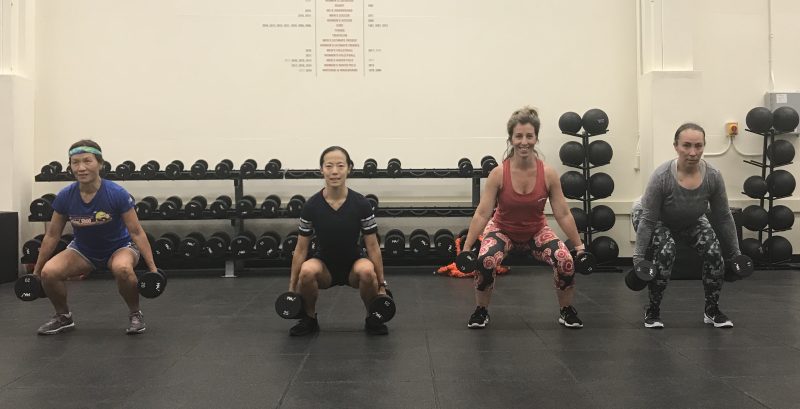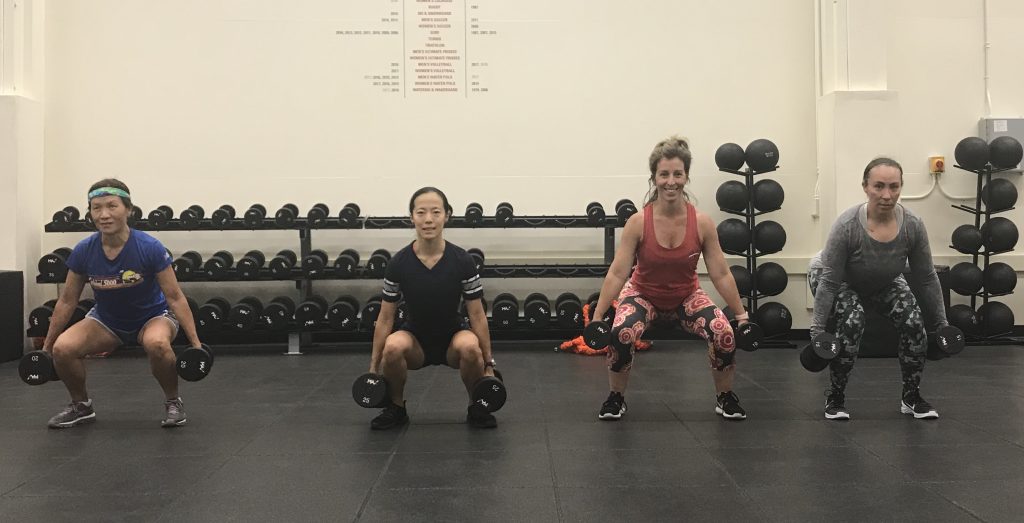Squats are not one-size-fits-all when it comes to creating the apple bottom clients are vying for. Each position has a purpose that goes beyond simply adding variety to a workout. When you alter the squat movement you change the targeted muscles and outcome of the exercise.
In recent months I’ve discussed squat form, and barbell squats as an advanced progression. Let’s take a look four run of the mill squat variations and the muscles they target to further our understanding of why we squat so many different ways.
Air Squats
Air squats, aka body-weight squats: place feet in a medium (hip width) stance; toes pointing straightforward or turned out. Maintain a neutral spine and tall chest during the eccentric (lowering) and concentric (rising) phases. The quadriceps, hamstrings, glutes, and core are primarily targeted. Check out proper squat alignment for more tips.
Squat Stance Variation
As discussed in How to Do Free Form Squats, foot placement can not only provide variety but also target slightly different muscle groups.
- Close Stance– feet together or up to two inches apart engages the vastus lateralis on the rising phase.
- Wide Stance– feet are about shoulder-width distance apart, thus recruiting the vastus medialis.
Suitcase Squats
A great progression for air squats is simply to add a dumbbell in each hand, and voila, you’ve got suitcase squats. I like these because they are functional. I encourage clients to think of their weights as groceries bags they need to carry from the car to the kitchen.
Split Stance Squats (Lunges)
Split stance squats recruit quadriceps, hamstrings, glutes, and soleus, while also requiring balance to challenge core and stabilizer muscles.
- Forward Lunges– step forward; knee should line up over ankle. Step back without foot-dragging.
- Reverse Lunges– step back, front knee should line up over ankle. Back knee should bend and “flirt” with the ground. Step forward without foot-dragging. Glute maximus and adductor magnus work as synergists.
- Lateral Lunges– step out to the side (right or left) leading with the heel, stepping knee should bend and line up over the ankle. Toes of both feet should face forward. Step feet back together without foot-dragging. Also recruits the adductors.
Squats have been a long-standing trend in the fitness industry. So why does it seem they are trendier than ever? Perhaps the answer is due to aesthetics. Because, for the first time in my lifetime, the hourglass, curvy, Kim Kardashian silhouette is in vogue.
What squats do you like to incorporate to add variety and build the muscles of the lower body?
[info type=”facebook”]Contribute to the conversation in the NFPT Facebook Community Group.[/info]




